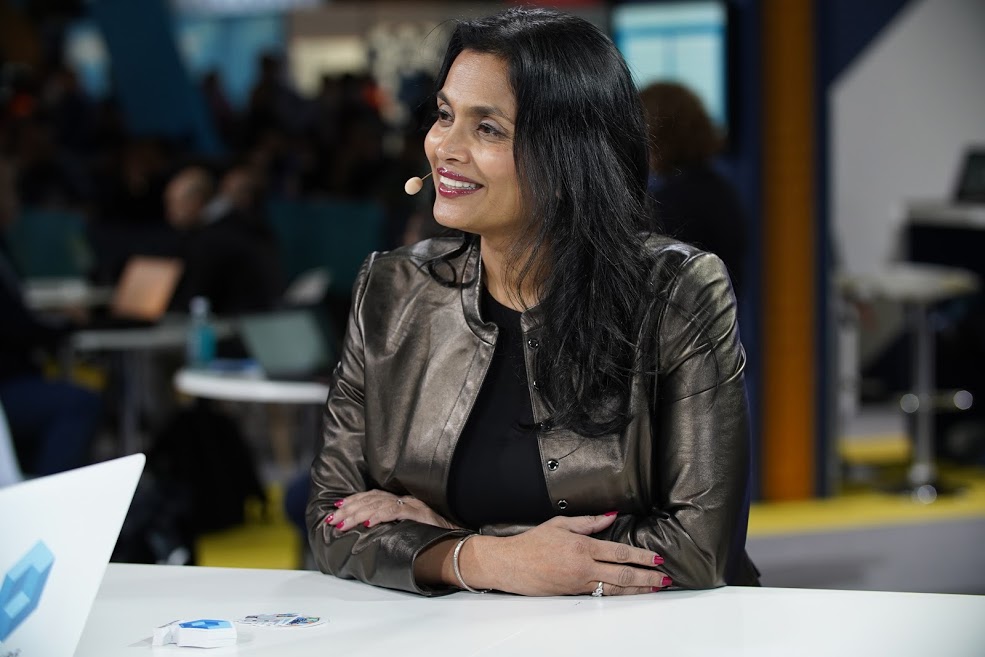 IOT
IOT
 IOT
IOT
 IOT
IOT
Any doubts about Cisco Systems Inc.’s commitment to providing products and services for the internet of things space were quickly erased in Barcelona, Spain, this past week.
The networking giant rolled out a series of announcements during its Cisco Live gathering designed to offer intent-based networking at the edge, where a preponderance of IoT devices reside. The launches represent an important move for Cisco because IoT is rapidly changing the definition of where and what a network is. What used to be a rack of switches and routers located in a wiring closet now extends to autonomous vehicles, manufacturing floors, shipping containers, and a lot more.
To ensure seamless data processing down to the last connected device, Liz Centoni (pictured), senior vice president and general manager of IoT at Cisco, oversees the company’s IoT initiatives. It’s a complicated picture because IoT deployment in today’s tech world involves network visibility amid complexity and management of a much larger security risk due to an expanded attack surface.
Centoni has relished these kinds of business challenges throughout her 19-year executive career with Cisco, a company that has weathered significant change in the information technology world for the better part of four decades. As the saying goes, “If you aren’t at the table, you’re on the menu.”
Centoni spoke with John Furrier (@furrier) and Dave Vellante (@dvellante), co-hosts of theCUBE, SiliconANGLE Media’s mobile livestreaming studio, during the Cisco Live event in Barcelona. They discussed the recent introduction of new products and services in support of Cisco’s IoT strategy, continued cultivation of the developer community, and Centoni’s active role in mentoring women in the tech industry. (* Disclosure below.)
This week, theCUBE features Liz Centoni as its Guest of the Week.
One of Cisco’s key launches involved the introduction of the Catalyst IE3x00 switch series and a new Integrated Services Router. Ruggedized for industrial environments, these new network products run on the company’s IOS XE operating system and are managed by Cisco’s DNA Center.
This is significant because Cisco has brought key features, such as security, visibility and overall management, to IoT device processing at the edge. Cisco’s solutions bridge operational technology with IT in industrial environments inside a common framework so customers no longer have to worry about getting the network technology to the data. It’s already there.
And there is evidence that the use cases for this kind of IoT approach are resonating with customers. Cisco claims 50,000 IoT clients today, including the Port of Rotterdam, which uses IoT technology to manage thousands of shipping containers around the world.
“In IoT, the technology conversation comes second,” Centoni said. “It’s about what you can deliver in terms of use cases and business outcomes that comes first.”
The news out of Barcelona also included Cisco’s introduction of three new validated designs. These are essentially reference architectures to provide the core network foundation for IoT deployment.
The newly released designs focus on manufacturing, utilities, and remote/mobile assets. “You can start a proof of concept really well, but you can’t take it to deployment unless you address things around the complexity, the scale and security,” Centoni said. “That’s where we can come in and help.”
Cisco is apparently not content to simply release new products, crank out a few press releases, and see how the market responds. The company wants the developer community to actually build on its IoT platform.
Accompanying the announcements surrounding the switch series and new validated designs was the opening of an IoT Developer Center where participants can take advantage of learning materials and development tools. Sandboxes and tutorials are available to encourage the development of new IoT applications.
The Developer Center is an offshoot of Cisco’s popular DevNet program, which launched five years ago and has already attracted over 500,000 participating developers.
“It enables developers and independent software vendors to actually build on top of IOx today,” Centoni said. “We expect to see more developers building applications at the edge.”
Mindful of her success in the male-dominated tech industry, Centoni has actively supported a company sponsorship program for high-potential female engineers and received acclaim for being among the “Top 10 Women In Cloud” and “Mentor of the Year” from Million Women Mentors.
Cisco is also notable for the representation of women in its top executive ranks. A review of the company’s executive bio pages shows that women represent nearly half of the executive leadership team, and another eight are listed in the senior leadership ranks.
Centoni attributes this, in part, to Cisco’s leadership under CEO Chuck Robbins. “Look at our leadership at Chuck’s level,” Centoni pointed out. “I think that’s a great example. He brings people on based on what they can bring to the table.”
Whether it’s Cisco’s IoT platform or just herself, at the table is exactly where Centoni wants to be.
Watch the complete video interview below, and be sure to check out more of SiliconANGLE’s and theCUBE’s coverage of the Cisco Live event. (* Disclosure: Cisco Systems Inc. sponsored this segment of theCUBE. Neither Cisco nor other sponsors have editorial control over content on theCUBE or SiliconANGLE.)
Support our mission to keep content open and free by engaging with theCUBE community. Join theCUBE’s Alumni Trust Network, where technology leaders connect, share intelligence and create opportunities.
Founded by tech visionaries John Furrier and Dave Vellante, SiliconANGLE Media has built a dynamic ecosystem of industry-leading digital media brands that reach 15+ million elite tech professionals. Our new proprietary theCUBE AI Video Cloud is breaking ground in audience interaction, leveraging theCUBEai.com neural network to help technology companies make data-driven decisions and stay at the forefront of industry conversations.